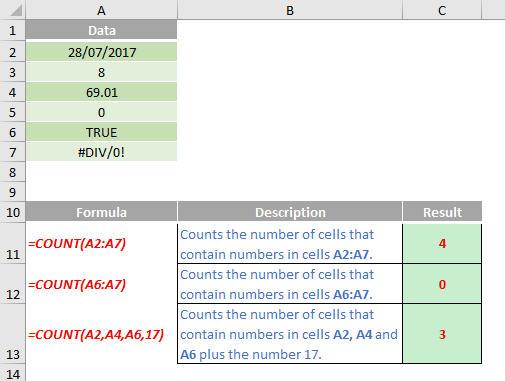A to Z of Excel Functions: The COUNT Function
11 December 2017
Welcome back to our regular A to Z of Excel Functions blog. Today we look at the COUNT function.
The COUNT function
Need a function you can COUNT on? Dracula couldn’t.
This function counts the number of cells that contain numbers and counts numbers within the list of arguments. You may use the COUNT function to get the number of entries in a number field that is in a range or array of numbers. For example, you can enter the following formula to count the numbers in the range A1:A20:
=COUNT(A1:A20).
In this example, if five of the cells in the range contain numbers, the result would be 5.
The COUNT function employs the following syntax to operate:
COUNT(value1, [value2], ...)
The COUNT function has the following arguments:
- value1: this is required and represents the first item, cell reference or range within which you want to count numbers
- value2: second and subsequent arguments are optional. Up to 255 additional items, cell references or ranges may be specified to count numbers.
It should be further noted that:
- arguments that are numbers, dates or a text representation of numbers (e.g. a number enclosed in quotation marks, such as "1") are counted
- logical values and text representations of numbers that you type directly into the list of arguments are counted
- arguments that are error values or text that cannot be translated into numbers are not counted
- if an argument is an array or reference, only numbers in that array or reference are counted. Empty cells, logical values, text or error values in the array or reference are not counted
- if you want to count logical values, text or error values, use the COUNTA function instead
- if you want to count only numbers that meet certain criteria, use the COUNTIF or COUNTIFS functions depending upon how many criteria are required.
Please see my example below:

We’ll continue our A to Z of Excel Functions soon. Keep checking back – there’s a new blog post every other business day.
A full page of the function articles can be found here.

